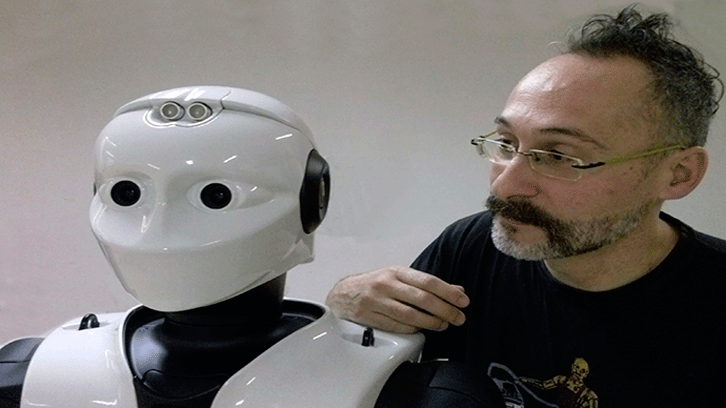New Friends 4.0, emotional affordances for human-robot interaction

We spent most of our time with machines of different types, such as computers, tablets, or smartphones, although we are attending to the increment of a new and special kind: robots. During the last decade of 20th Century several progresses were done about the affective computing research, something completely necessary for the design of human-friendly work spaces. Now it’s the turn of robotics, which is being implemented in more diverse fields (industry, military, medical care, leisure, sexuality,..).
Offering an answer to this new necessity of designing optimal strategies for the design of robots able of Human-Robot Interactions (henceforth, HRI), the professor Jordi Vallverdú, from UAB’s Philosophy department, together with Grabiele Trovato engineer from Waseda University (Tokyo), have written a paper about emotional affordances in HRI:[Vallverdú, J. & Trovato, G. (2016) "Emotional Affordances for HRI" , Adaptive Behavior, 24(5): 1-15].
Cognitive Scientists consider as an affordance something that makes possible, and at the same time constrain an action. Take for example a hammer: according to the employed materials, shape, and design it offers us some clues about its possible use. In the same sense, our own bodily morphology, together with several cultural variables (very oftenly, tacit ones), become an emotional space that requires according answers.
If we do not allow our best friend to mock or smile to us while we are explaining her/him our latest worries, that is, looking for an in tuned empathy, when we interact with a robot it is obvious that its bodily or expressive design can affect our relationship, which will follow the same naturalistic logic that we’ve applied to our best friend. It is even more important if we talk about anthropomorphic robots. The current research offers a holistic model from which to consider the bunch of necessary variables at the moment of capturing multidimensional emotional elements. This process will allow the creation of clear libraries for its implementation in robotic engineering laboratories.
The joint interests of a specialist on cognitive sciences and a robotic engineer has made possible the design of an innovative work space which is being explored in more detail at this moment. The 21st Century revolution is both the revolution of Artificial Intelligence (AI) and robotics, which will be implemented massively in several fields which remained until very recently as exclusively performed by humans. If this is the course of History, is then necessary to have efficient and gentle models towards our species, which allow robots to become a support instead that of a thread or a worry. This paper is a first and grounded step towards the reach of this fundamental aim.
As usual, emotions delimit whatever we can feel and at the same time guide our behavior. It now necessary to implement them correctly into robots, for HRI purposes as well as for the design of biomimetic artificial cognitive systems.
A big challenge!
References
Vallverdú, J and Trovato, G. Emotional Affordances for HRI, Adaptive Behavior, Vol 24, Issue 5, pp. 320 - 334 DOI: 10.1177/1059712316668238.

